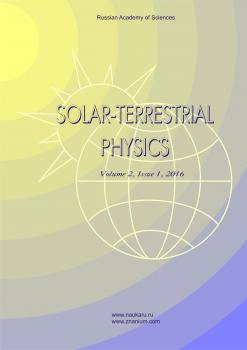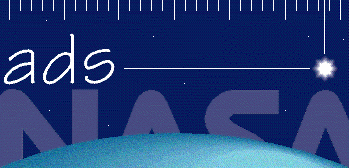Irkutsk, Russian Federation
Irkutsk, Russian Federation
We have analyzed the fast coronal mass ejection (CME) that occurred on February 25, 2014. The analysis is based on images taken in the 131, 211, 304, and 1700 Å UV channels of the SDO/AIA instrument and from observations obtained in the Hα line (6562.8 Å) with the telescopes of the Teide and Big Bear Observatories. The February 25, 2014 CME is associated with the ejection and subsequent explosive expansion of the magnetic flux rope, which appeared near the solar surface presumably due to the tether-cutting magnetic reconnection. The impulse of full pressure (thermal plus magnetic) resulting from such an “explosion” acts on the overlying coronal arcades, causing them to merge and form an accelerated moving frontal structure of the CME. This pressure impulse also generates a blast collisional shock wave ahead of the CME, whose velocity decreases rapidly with distance. At large distances R>7R₀ (R₀ is the solar radius) from the center of the Sun in front of the CME, a shock wave of another type is formed — a “piston” collisional shock wave whose velocity varies little with distance. At R≥15R₀, there is a transition from a collisional to a collisionless shock wave.
coronal mass ejection, magnetic rope, coronal arcades, blast shock wave, solar wind, collisional and collisionless shock waves
1. Alekseenko S.V., Dudnikova G.I., Romanov V.A., Romanov D.V., Romanov K. Magnetic field instabilities in the solar convective zone. Rus. J. Eng. Thermophys. 2000, vol. 10, pp. 243-262.
2. Amari T., Luciani J.F., Mikic Z., Linker J. A twist flux rope model for coronal mass ejections and two-ribbon flare. Astrophys. J. 2000, vol. 529, pp. L49-L52. DOI:https://doi.org/10.1086/312444.
3. Antiochos S.K., DeVore C.R., Klimchuk J.A. A model for solar coronal mass ejections. Astrophys. J. 1999, vol. 510, no. 1, pp. 485-493. DOI:https://doi.org/10.1086/306563.
4. Archontis V., Hood A.W. A flux emergence model for solar eruptions. Astrophys. J. 2008, vol. 674, pp. L113-L116. DOI:https://doi.org/10.1086/529377.
5. Bemporad A., Raymond J., Poletto G., Romoli M. A comprehensive study of the initiation and early evolution of a coronal mass ejection from ultraviolet and white-.light data. Astrophys. J. 2007, vol. 655, pp. 576-590. DOI:https://doi.org/10.1086/509569.
6. Chen H., Zhang J., Cheng X., Ma S., Yang S., Li T. Direct observations of tether-cutting reconnection during a major solar event from 2014 February 24 to 25. Astrophys. J. Lett. 2014, vol. 797, no. 2, L15, 7 p. DOI:https://doi.org/10.1088/2041-8205/797/2/L15.
7. Eselevich M.V. Detecting the width of shock front preceding CME. Astronomy Report. 2010, vol. 54, no. 2, pp. 197-208.
8. Eselevich M.V., Eselevich V.G. Some properties of the development of the perturbed zone and shock preceding a coronal mass ejection. Astronomy Reports. 2011, vol. 55, no. 11, pp. 1038-1050.
9. Eselevich V., Eselevich M. Disturb zone and piston shock ahead of coronal mass ejection. Astrophys. J. 2012, vol. 761, no. 1, 10 p. DOI:https://doi.org/10.1088/0004-637X/761/1/68.
10. Eselevich V.G., Eselevich M.V. The role of rising magnetic tubes in the formation of impulsive coronal mass ejections. Astronomy Reports. 2013, vol. 57, no. 11, pp. 860-871. DOI:https://doi.org/10.1134/S1063772913110012.
11. Eselevich V.G., Eselevich M.V. Physical differences between the initial phase of the formation of two types of coronal mass ejections. Astronomy Reports. 2014, vol. 58, no. 4, pp. 260-271. DOI:https://doi.org/10.1134/S1063772914030032.
12. Eselevich V.G., Eselevich M.V. Differences in the development of the initial phase of the formation of two types of coronal mass ejections. Cosmic Res. 2015, vol. 53, no. 1, pp. 21-30. DOI:https://doi.org/10.1134/S0010952515010049.
13. Eselevich V.G., Eselevich M.V., Romanov V.A., Romanov D.V., Romanov K.V., Kucherov N.V. Physical mechanisms for the generation of coronal mass ejections from the upper layers of the convective zone. Izvestiya Krymskoi Astrofizicheskoi Observatorii [Bulletin of the Crimean Astrophysical Observatory]. 2013, vol. 109, no. 4, pp. 54-60. (In Russian).
14. Eselevich V.G., Eselevich M.V., Zimovets I.V., Rudenko G.V. Initial formation of an “impulsive” coronal mass ejection. Astronomy Reports. 2016, vol. 60, no. 11, pp. 1016-1027. DOI:https://doi.org/10.1134/S1063772916100024.
15. Fainshtein V.G., Egorov Ya.I. Initiation of CMEs associated with filament eruption, and the nature of CME related shocks. Adv. Space Res. 2015, vol. 55, iss. 3, pp. 798-807. DOI:https://doi.org/10.1016/j.asr.2014.05.019.
16. Gibson E. Spokoinoe Solntse [The Quiet Sun]. Moscow, Mir Publ., 1977, pp. 125-146. (In Russian). (English edition: Gibson E.G. The Quiet Sun. National Aeronautics and Space Administration, Scientific and Technical Information Office, 1973, 330 p.).
17. Gibson S.E., Foster D., Burkepile J., de Toma G., Stanger A. The calm before the storm: The link between quiescent cavities and coronal mass ejections. Astrophys. J. 2006, vol. 641, no. 1, pp. 590-605. DOI:https://doi.org/10.1086/500446.
18. Grechnev V.V., Uralov A.M., Kochanov A.A., Kuzmenko I.V., Prosovetsky D.V., Egorov Y.I., Fainshtein V.G., Kashapova L.K. A tiny eruptive filament as a flux-rope progenitor and driver of a large-scale CME and wave. Solar Phys. 2016, vol. 291. pp. 1173-1208. DOI:https://doi.org/10.1007/s11207-016-0888-z.
19. Grechnev V.V., Lesovoi S.V., Kochanov A.A., Uralov A.M., Altyntsev A.T., Gubin A.V., Zhdanov D.A., Ivanov E.F., Smolkov G.Ya., Kashapova L.K. Multi-instrument view on solar eruptive events observed with the Siberian Radioheliograph: From detection of small jets up to development of a shock wave and CME. JASTP. 2018, vol. 174, pp. 46-65. DOI:https://doi.org/10.1016/j.jastp.2018.04.014.
20. Hundhausen A.J. Coronal mass ejections. The Many Faces of the Sun: A Summary of the Results from NASA’s Solar Maximum Mission. New York, Springer, 1999, pp. 143-200.
21. Kliem B., Titov V.S., Török T. Formation of current sheets and sigmoidal structure by the kink instability of a magnetic loop. Astron. Astrophys. 2004, vol. 413, no. 3, pp. L23-L26. DOI:https://doi.org/10.1051/0004-6361:20031690.
22. Krall J., Chen J., Santoro R. Drive mechanisms of erupting solar magnetic flux ropes. Astrophys. J. 2000, vol. 539, pp. 964-982. DOI:https://doi.org/10.1086/309256.
23. Lemen J.R., Title A.M., Akin D.J., Boerner P.F.,•Chou C., Drake J.F., Duncan D.W.,•Edwards C.G.,•Friedlaender F.M., et al. The Atmospheric Imaging Assembly (AIA) on the Solar Dynamics Observatory (SDO). Solar Phys. 2012, vol. 275, pp. 17-40. DOI:https://doi.org/10.1007/s11207-011-9776-8.
24. MacQueen R.M., Fisher R.R. The kinematics of solar inner coronal transients. Solar Phys. 1983, vol. 89, pp. 89-102. DOI:https://doi.org/10.1007/BF00211955.
25. Magara T., Longcope D.W. Sigmoid structure of an emerging flux tube. Astrophys. J. 2001, vol. 559, pp. L55-L59. DOI:https://doi.org/10.1086/323635.
26. Mann G., Aurass H., Klassen A., Estel C., Thompson B.J. Coronal transient waves and coronal shock waves. ESA SP-446: Plasma Dynamics and Diagnostics in the Solar Transition Region and Corona. Proc. 8th SOHO Workshop (22-25 June 1999, Paris, France). 1999, p. 477.
27. Mann G., Klassen A., Aurass H., Classen H.-T. Formation and development of shock waves in the solar corona and the near-Sun interplanetary space. Astron. Astrophys. 2003, vol. 400, pp. 329-336. DOI:https://doi.org/10.1051/0004-6361:20021593.
28. Moore R.L., LaBonte B.J. The filament eruption in the 3B flare of July 29, 1973: Onset and magnetic field configuration. Solar and Interplanetary Dynamics. International Astronomical Union / Union Astronomique Internationale (Symposium No. 91 held in Cambridge, Massachusetts, U.S.A. August 27-31, 1979). Springer, Dordrecht, 1980, pp. 207-211. DOI:https://doi.org/10.1007/978-94-009-9100-2_32.
29. Moor R.L., Sterling A.C., Hudson H.S., Lemen J.R. Onset of the magnetic explosion in solar flares and coronal mass ejections. Astrophys. J. 2001, vol. 552, no. 2, pp. 833-848. DOI:https://doi.org/10.1086/320559.
30. Moreno-Insertis F., Schussler M., Ferriz-Mas A. Storage of magnetic flux tubes in a convective overshoot. Astron. Astrophys. 1992, vol. 264, no. 2, pp. 686-700.
31. Patsourakos S., Vourlidas A., Stenborg G. Direct evidence for a fast coronal mass ejection driven by the prior formation and subsequent destabilization of a magnetic flux rope. Astrophys. J. 2013, vol. 764, no. 2, 125, 13 p. DOI:https://doi.org/10.1088/0004-637X/764/2/125.
32. Priest E.R. Solnechnaya magnitogidrodinamika [Solar magnetohydrodynamics]. Moscow, Mir Publ., 1985, p. 89. (In Russian). (English edition: Priest E.R. Solar Magnetohydrodynamics. Springer Netherlands, 1982, 469 p. (Geophysics and Astrophysics Monographs, vol. 21)).
33. Romanov V.A., Romanov D.V., Romanov K.V. Outburst of magnetic fields from the zone of action of the solar dynamo into the atmosphere of the Sun. Astronomicheskii zhurnal [Astronomy Reports]. 1993a, vol. 70, pp. 1237-1246. (In Russian).
34. Romanov V.A., Romanov D.V., Romanov K.V. The ejection of magnetic fields from the solar dynamo to the relaxation zone. Astronomicheskii zhurnal [Astronomy Reports]. 1993b, vol. 70, pp. 1247-1256. (In Russian).
35. Schmieder B., Démoulin P., Aulanier G. Solar filament eruptions and their physical role in triggering coronal mass ejections. Adv. Space Res. 2013, vol. 51, iss. 11, pp. 1967-1980. DOI:https://doi.org/10.1016/j.asr.2012.12.026.
36. Sheeley N.R.Jr., Walter H., Wang Y.-M., Howard R.A. Continuous tracking of coronal outflows: Two kinds of coronal mass ejections. J. Geophys. Res. 1999, vol. 104, no. A11, pp. 24739-24768. DOI:https://doi.org/10.1029/1999JA900308.
37. Shen Y., Liu Y., Su J. Sympathetic partial and full filament eruptions observed in one solar breakout event. Astrophys. J. 2012, vol. 750, 12, 13 p. DOI:https://doi.org/10.1088/0004-637X/750/1/12.
38. Sterling A.C., Moore R.L. Slow-rise and fast-rise phases of an erupting solar filament, and flare emission onset. Astrophys. J. 2005, vol. 630, no. 2, pp. 1148-1159. DOI:https://doi.org/10.1086/432044.
39. Temmer M., Veronig A.M., Vršnak B., Rybák J., Gömöry P., Stoiser S., Maričić D. Acceleration in fast halo CMEs and synchronized flare HXR bursts. Astrophys. J. Lett. 2008, vol. 673, pp. L95-L98. DOI:https://doi.org/10.1086/527414.
40. Thernisien A., Vourlidas A., Howard R.A. Forward modeling of coronal mass ejection using STEREO/SECCHI data. Solar Phys. 2009, vol. 256, pp. 111-130. DOI:https://doi.org/10.1007/s11207-009-9346-5.
41. Vernazza J.E., Avrett E.H., Loeser R. Structure of the solar chromophere. Basic computations and summary of the results. Astrophys. J. 1973, vol. 184, pp. 605-631. DOI:https://doi.org/10.1086/152353.
42. Vernazza J.E., Avrett E.H., Loeser R. Structure of the solar chromophere. II. The underlying photosphere and temperature-minimum region. Astrophys. J. Suppl. Ser.1976, vol. 30, pp. 1-60. DOI:https://doi.org/10.1086/190356.
43. Wang Y.-M., Sheeley N.R., Socker D.G., Howard R.A., Rich N.B. The dynamical nature of coronal streamers. J. Geophys. Res. 2000, vol. 105, pp. 25,133-25,142. DOI:https://doi.org/10.1029/2000 JA000149.
44. Zagainova Iu.S., Fainshtein V.G. How do fast impulse CMEs related to powerful flares but unrelated to eruptive filaments appear and move? Adv. Space Res. 2015, vol. 55, iss. 3, pp. 822-834. DOI:https://doi.org/10.1016/j.asr.2014.05.032.
45. Zhang J., Wang J., Deng Y., Wu D. Magnetic flux cancellation associated with the major solar event on 2000 July 14. Astrophys. J. 2001, vol. 548, pp. L99-L102.
46. URL: https://www.nso.edu/telescopes/nisp (accessed March 27, 2020).
47. URL: http://gong2.nso.edu (accessed March 27, 2020).

















